Your Guide to Making Cut Flowers Last (Like, Actually Last)
Ever feel like you bring home a beautiful bouquet of flowers, and they just decide to give up on life two days later? You’re not alone. It’s a super common frustration, but I’m here to tell you it’s not because you have a “black thumb.” It’s usually because nobody ever shared the simple, trade secrets that florists use every single day.
In this article
Forget the intimidating flower-buying experience. We’re going to pull back the curtain on how to choose the absolute best stems—whether you’re at a fancy florist, the farmer’s market, or even just grabbing a bunch at the grocery store. This is the stuff that makes the difference between flowers that just look nice for a day and a bouquet that genuinely thrives.
So, Why Do Flowers Wilt So Fast?
Before we get into the fun stuff, you gotta understand what’s happening inside that little green stem. Think of a flower as a living thing that’s just been disconnected from its life support. Our job is to create a new one, and it’s easier than you think.
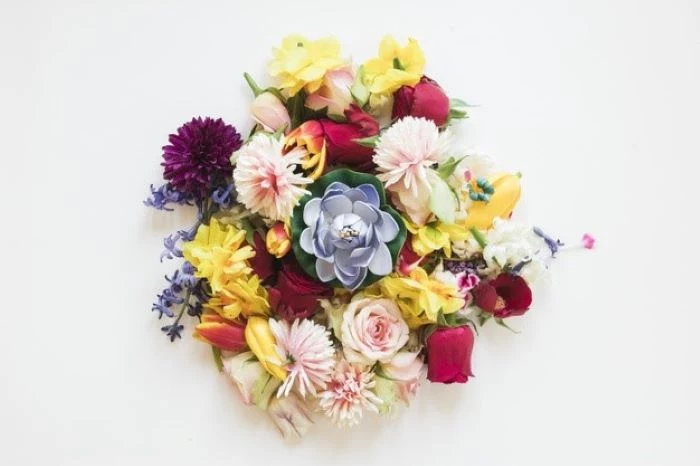
Every stem is basically a bundle of tiny straws (the pros call them xylem) that pull water up to the flower head. The second that stem is cut, it tries to heal itself by sealing the wound. But sometimes, it sucks in a tiny air bubble instead. That bubble creates a blockage, and just like that, no more water can get through. This is why a flower can be sitting in a full vase of water and still look sad and droopy. The path is blocked. It’s the #1 reason cut flowers die early.
The Big Three: Water, Food, and a Clean Slate
To keep flowers happy in a vase, they need three things. Nail these, and you’re 90% of the way there.
- Water Temperature Matters: Here’s a quick tip most people don’t know. Use lukewarm water, somewhere around 100°F (or just warm to the touch). Why? Warm water molecules move faster and are absorbed more easily by the stems. Ice-cold water can actually shock the flower and slow everything down.
- That Little Food Packet Is Legit: Seriously, don’t throw it out! It’s not a gimmick. It contains sugar to feed the bloom, a biocide to kill nasty bacteria in the water, and an acidifier to help the stems drink more efficiently. Just follow the ratio on the packet, which is usually for one quart or liter of water. If your vase is smaller, just mix it in a separate container and save the rest for later! And please, skip the home remedies like aspirin or soda—they do more harm than good.
- Cleanliness is Everything: This is the step people skip, and it’s a killer. Any leaves left on the stem below the waterline will start to rot, breeding bacteria that clogs the stems. Your vase needs to be truly clean—scrubbed with hot, soapy water, not just rinsed. Old residue can ruin a fresh bouquet instantly.
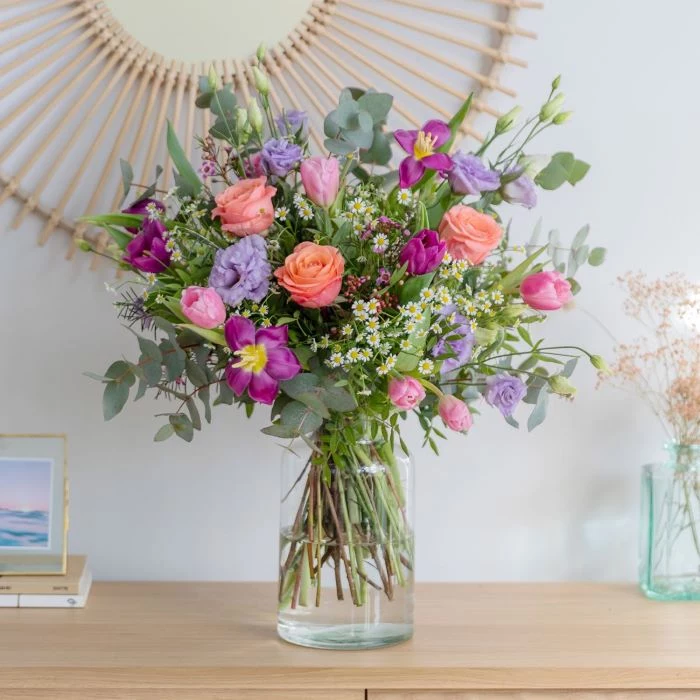
The Invisible Enemy: Ethylene Gas
Heads up! There’s an invisible flower-killer lurking in your house: ethylene gas. It’s a natural plant hormone that signals aging and decay. Flowers are super sensitive to it. The biggest culprit in most homes? Ripening fruit.
That beautiful bowl of bananas on your kitchen counter is a death sentence for the tulips next to it. I learned this the hard way once when a new shop assistant left their lunch bag—with one banana inside—in our main flower cooler overnight. It was an expensive lesson I’ll never forget, as we lost hundreds of dollars worth of wedding roses. Keep your flowers far away from fruit bowls, and also away from cigarette smoke and car exhaust.
How to Shop for Flowers Like a Pro
Okay, now you’re armed with the science. Let’s go shopping. It doesn’t matter where you are; the signs of freshness are universal. You just need to know what to look for.
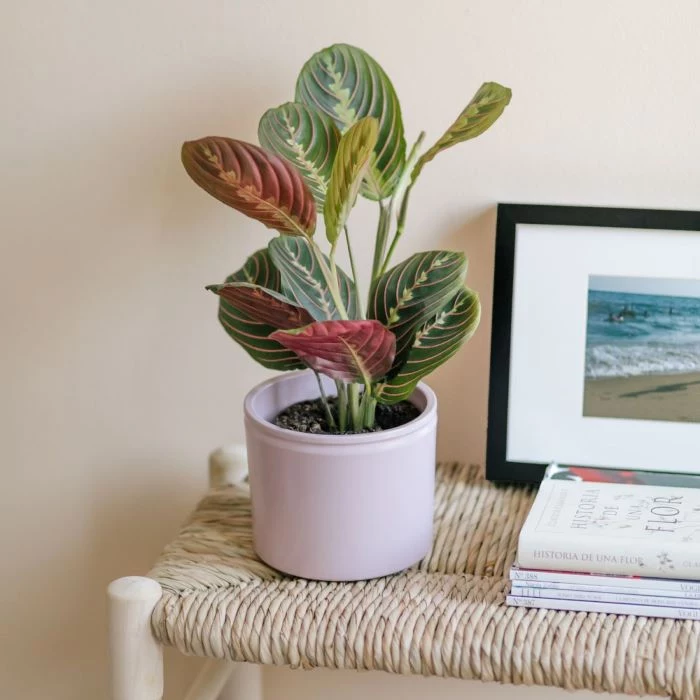
- Check the Stem Bottoms: Look at the very end of the stems. They should be firm and green or white. If they look brown, mushy, or slimy, walk away. That flower is old.
- Look at the Leaves: Foliage should be green and perky. Any yellowing or wilting leaves are a bad sign. (By the way, some flowers like gerbera daisies are sold without leaves, and that’s totally normal).
- Examine the Blooms: For flowers like roses or lilies, you want to buy them when the buds are still mostly closed or just starting to open. You get to enjoy the whole blooming process that way! Gently squeeze the base of a rose where it meets the stem. It should feel firm. If it’s soft and squishy, it’s past its prime.
- Do the Water Test: This is a big one. Look at the water in the bucket at the store. Is it clear or cloudy and gross? Murky water is a huge red flag for neglect and bacteria. I wouldn’t touch those flowers.
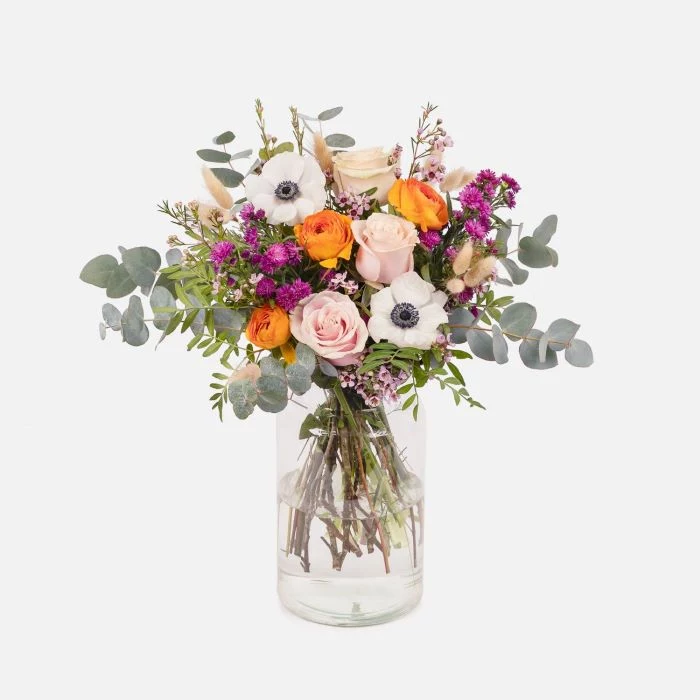
Where to Buy: A Quick and Honest Breakdown
Where you get your flowers makes a huge difference in price and quality. At a supermarket or big-box store, you’re looking at convenience and a lower price point, maybe $15 to $30 for a decent bunch. The trade-off is that the quality is a gamble, and you have to do all the prep work yourself. You can find some real gems, but you have to be your own quality control inspector.
Your local farmer’s market is an amazing option for seasonal blooms. The flowers are incredibly fresh—often cut that same morning! You’re supporting a local business, and the quality is usually fantastic for what’s in season. The variety is limited to what grows nearby, but a fresh bunch of dahlias for $20 is hard to beat.
Then you have the professional florist. Yes, it’s the most expensive option. A thoughtfully designed bouquet might start around $65 to $85. But here’s what you’re paying for: expertise, artistry, access to unique and high-grade flowers, and the guarantee that every single stem has been perfectly conditioned for the longest possible vase life. For a special occasion, it’s worth it.
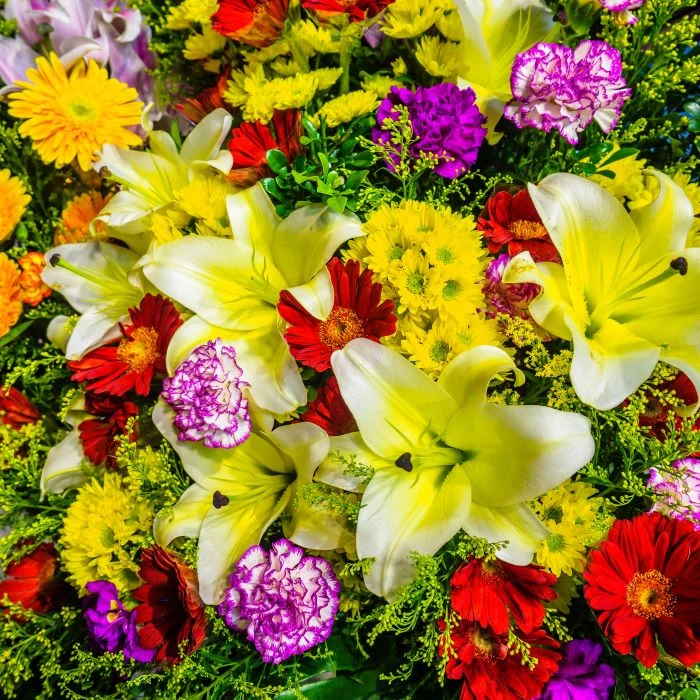
And what about online retailers? It’s a roll of the dice, honestly. Some are great, but many are just middlemen. My advice is to read recent reviews and look for companies that show photos of their actual arrangements, not generic stock images. Remember, someone will still need to prep those flowers when they arrive.
The Most Important Step: The Prep Routine
This process, called “conditioning,” is what we do to every flower that comes through our doors. It’s like stretching before a marathon, and it’s non-negotiable for long-lasting blooms.
Your Flower Prep Toolkit:
- A squeaky-clean bucket or deep vase
- Flower food
- A very sharp floral knife or floral snips. You can find these at craft stores or online for about $10-$15. Quick tip: Do NOT use regular kitchen scissors. They’re too dull and will crush the stem’s delicate plumbing, making it harder for them to drink.
Step 1: Strip the Lower Leaves. Go through each stem and remove any leaves that will sit below the waterline in your final vase. This is your best defense against bacteria.
Step 2: The Underwater Cut. This is the secret sauce. Cut at least one inch off the bottom of every stem at a sharp 45-degree angle to maximize the surface area. The most important part? Do it with the stem end submerged in water. This prevents that dreaded air bubble from getting sucked in. You can do this in your bucket or just in a bowl of water.
Quick Win: If you’re short on time and can only do ONE thing from this guide, make it this step. A fresh, angled cut alone can add days to your flowers’ life.
Step 3: Let Them Drink. Immediately place your freshly cut stems into your prepared bucket of lukewarm water and flower food. Let them sit in a cool, dark place (like a bathroom or basement) for at least two hours. This “hardening off” period lets them rehydrate peacefully without the stress of light and heat before you arrange them.
Pro-Tricks for Tricky Flowers and Arrangements
Once your flowers are conditioned, the fun begins! A simple hand-tied bouquet looks incredibly chic. The trick is to create a spiral. Start by making an ‘X’ with your first two stems. As you add more, place each new stem at that same diagonal angle, turning the bunch slightly in your hand as you go. This creates a stable, dome-shaped bouquet.
A few bonus tips for specific flowers:
- Hydrangeas are dramatic. They are notorious for wilting! If yours suddenly droops, try this emergency revival trick: re-cut the stem, then dip the bottom two inches into very hot (not boiling) water for about 30 seconds before placing it back in a vase of cool water. It often works like magic.
- Woody stems need extra help. For flowers like lilac or forsythia, a simple cut isn’t enough. After you cut them at an angle, you can also carefully slit the stem vertically about an inch up from the bottom. This helps these tough stems absorb more water.
The Most Important Warning: A Note on Pet Safety
Okay, let’s get serious for a moment. This is easily the most critical part of this guide. Many common flowers are toxic to pets if they’re chewed on or ingested.
EXTREME WARNING FOR CAT OWNERS: All parts of any lily—the pollen, petals, leaves, even the water in the vase—are lethally poisonous to cats. Even a tiny exposure can cause rapid, irreversible kidney failure. If you’re buying flowers for a cat owner, you must NEVER give them lilies. It is simply not worth the risk.
So what can you buy? If you’re nervous about toxicity, here’s a short list of popular choices that are generally considered pet-safe: Roses, Sunflowers, Gerbera Daisies, and Snapdragons.
When in doubt, always ask your florist or do a quick search on a reliable veterinary website before buying. Your florist should be knowledgeable about this!
Final Thoughts
Giving flowers is a timeless way to connect with people. And when you put a little extra knowledge and care into it, you’re elevating a simple gift into a true gesture of thoughtfulness. You’re not just giving flowers; you’re giving a little piece of living beauty and honoring the craft behind it. And that’s something anyone can appreciate.










